51% of all website traffic comes from search engines like Google.
That means if you aren’t optimizing your pages and content for search engines, you’re missing out big time!
With some tweaks and changes, you could experience a jump in ranking and organic traffic which can convert into paying customers.
Yet still so many businesses neglect their SEO.
But there’s the thing…
You don’t need to spend large amounts of money on link building campaigns or SEO services to reap the rewards.
Following a few best practices will start to create noticeable results before you know it.
Do you want to learn SEO best practices that will transform your website’s performance in the SERPs? Then keep reading.
Avoid black hat techniques
I know, I know.
It can be tempting to use black hat techniques because they promise riches and huge results in a short amount of time.
However, it’ll also be a short amount of time before Google slaps you with the ban hammer.
Using black hat strategies essentially makes your website into a ticking time bomb.
It becomes a game of cat and mouse until you eventually get caught. And, you will get caught.
But what is black hat, exactly?
The definitions for these different “hats” can get mixed up some times causing confusion. I think this cartoon puts it perfectly:
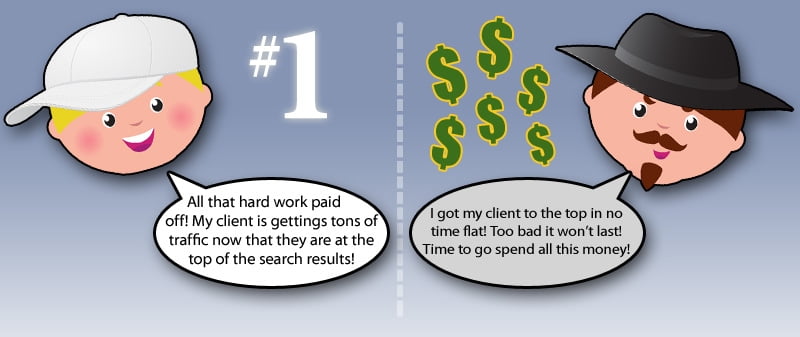
Black hat uses strategies that go against terms of service, some times the law, and eventually fizzle out because the web properties become penalized.
Back in early to mid-2000s when Google’s algorithm wasn’t super-duper advanced like it is today, black hat SEO’s would blast sites with crappy links in the tens to hundreds of thousands.
And you know what? It worked incredibly!
But all good things come to an end 🙁
Over time Google worked on their algorithm to rank websites based on different factors, weeding out the marketers who abused the system.
Looking back at those days, SEO was like the wild-wild west. Quality over quantity is the name of the game now in all regards.
Here’s another thing to consider: be careful which SEO service provider you choose because some perform black hat techniques on their client’s websites.
I would recommend that if you outsource search engine optimization that you thoroughly question the provider’s strategies, goals, morals, etc.
These will most likely be listed on their website and can be learned about in customer reviews.
I’d also read this previous article I wrote explaining what SEO companies do and how to find the best one for your situation.
Trust me when I say that if you stick to white hat approaches, you will build a business for the long term that beats black hat competitors and lets you sleep at night.
Get your page speed right
Have you ever been on a website that took forever to load so you clicked back and found another site?
We all do it.
That’s why page speed is so important. It improves the user experience and tells Google that your website is optimized and important.
As a matter of fact, faster page speed is connected to higher conversion rates, as well.
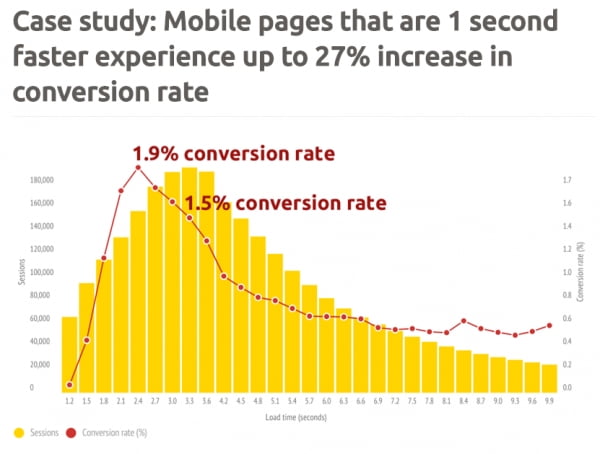
You can test your page speed by using a free tool like WebPageTest.
Enter in the URL of your website, choose a location nearest to your web hosting server, and select a browser before clicking the test button.
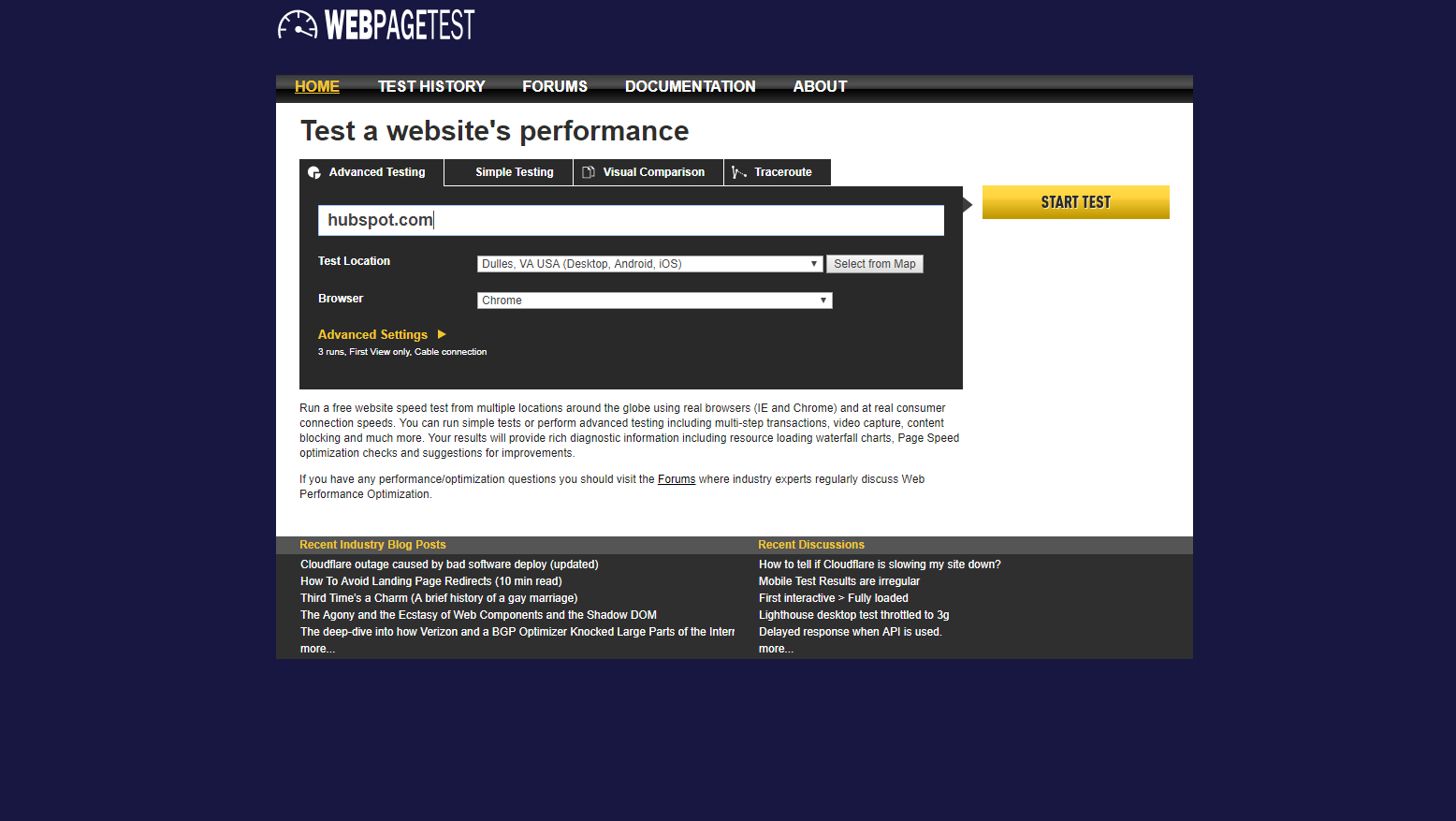
This will display a score for different metrics including image compression, use of a CDN, caching, and more.
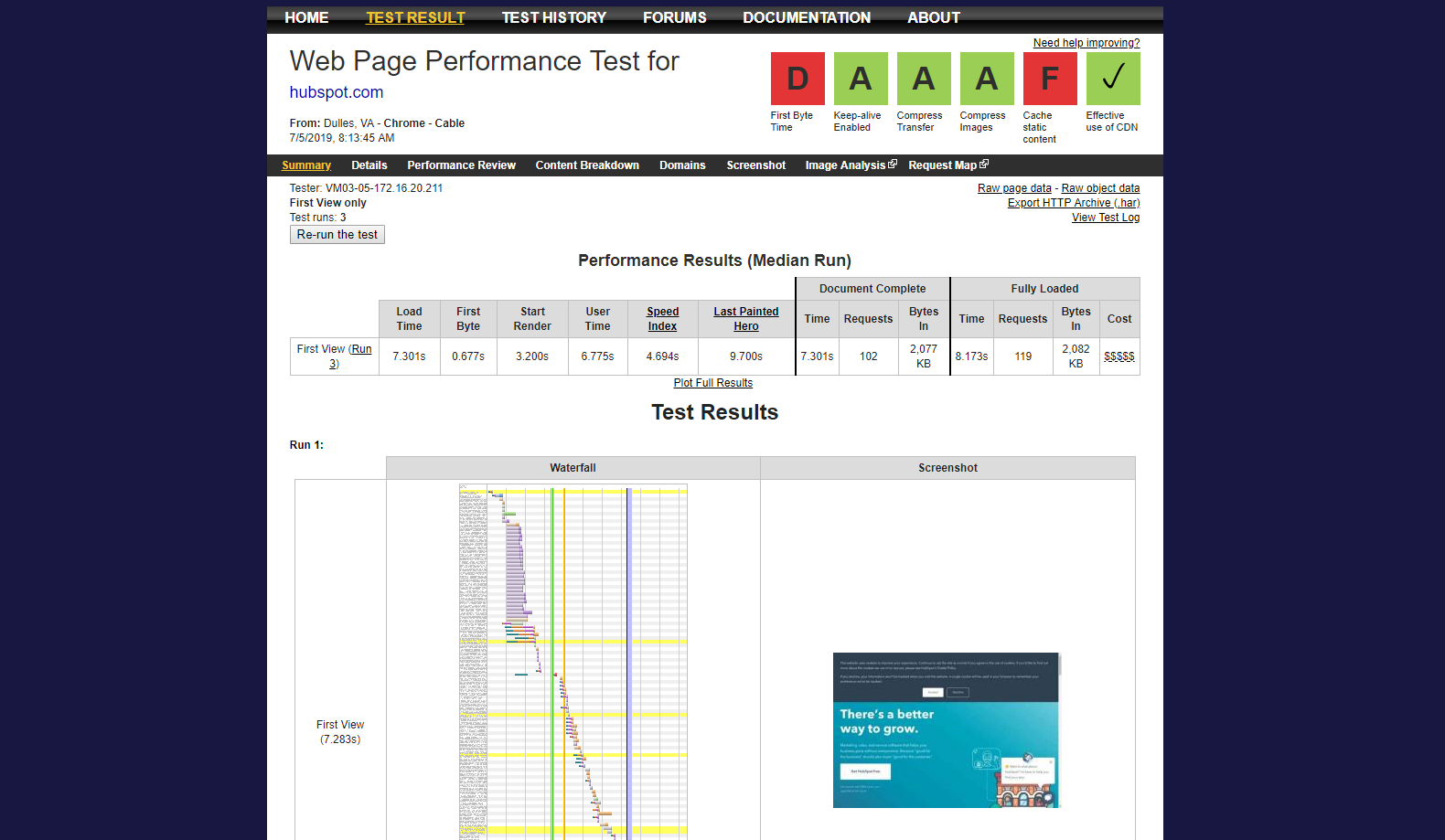
Use this to determine if your website is loading slow and if there are particular areas you can improve.
Some of the strategies I’m outline today will help boost page speed, as well.
Optimize URLs
The URL is the address of a website or a particular page. It helps both users and search engines understand the page’s inner content.
I often see businesses make the mistake of not cleaning up URLs of blog posts, pages, and other elements of their website.
It’s a small detail that helps improve the user experience and rankings in the SERPs at the same time.
Let me show you two examples of URLs with the first needing some improvement:

Notice how the URL has random PHP appended to the end of it. This will easily confuse both users and the algorithm as it doesn’t communicate any useful information.
Look at this URL on the other hand:

It’s short, clean, and includes an SEO keyword. Strive to make the URLs of your website and inner pages like this.
Most platforms will allow you to quickly edit the URL of the pages you create so this doesn’t require any deep technical skills, either.
This brings me to my next point.
Title tags and meta descriptions
Similar to the URL of a web page, the title tag and meta descriptions are other small details you need to optimize.
It’s easy to forget about them, but they play a large role in rankings.
Let’s define what both of these elements are first:
- Title tag: HTML code that defines the title of a particular page. These appear in search engine listings and via browser tabs.
- Meta description: More HTML code that describes the page in further detail, and appears strictly in search engine results pages.
They appear like the following on Google:

You can optimize the title tag by including a search term you’re attempting to rank for and using copywriting strategies like:
- Adding urgency to entice more users to click through.
- Using exact numbers to make the content seem more appealing and interesting. “How to Increase Organic Traffic by 55% in Two Weeks” is an example of this.
- Stating a benefit readers will gain by consuming the content or visiting your site.
The meta description should be approached in the same way. Optimizing them is an excellent opportunity to stand out among other search results.
Note that keywords become bold in meta descriptions like in the above example. This helps increase how many users click your listing versus another as it catches more attention and implies relevancy.
Personally I always sum up the main points and benefits of a page through the meta description. This gives users a quick overview of what they will learn and take away by visiting my site.
And what’s a web page without images? Let’s touch on that next.
Image file name and alt text
Google and other search engine algorithms scan every little detail of your site.
And I mean everything.
This includes the file name and alt text of the media you upload.
Placing keywords in these areas will help you rank for search terms.
Editing a file name is as easy as renaming it from your desktop or folder before uploading it.
The alt text of an image is a bit different, however. This will change based on the platform you use to create your website.
Alternative text is the word or phrase presented when an image doesn’t load. Alternatively, it is read aloud through software for visually impaired users.
Seeing as WordPress powers 26% of all websites on the internet, I’ll run you through editing alt text if you use it as a CMS.
A window prompt appears every time you upload media to WordPress, and the alt text can be directly changed there.
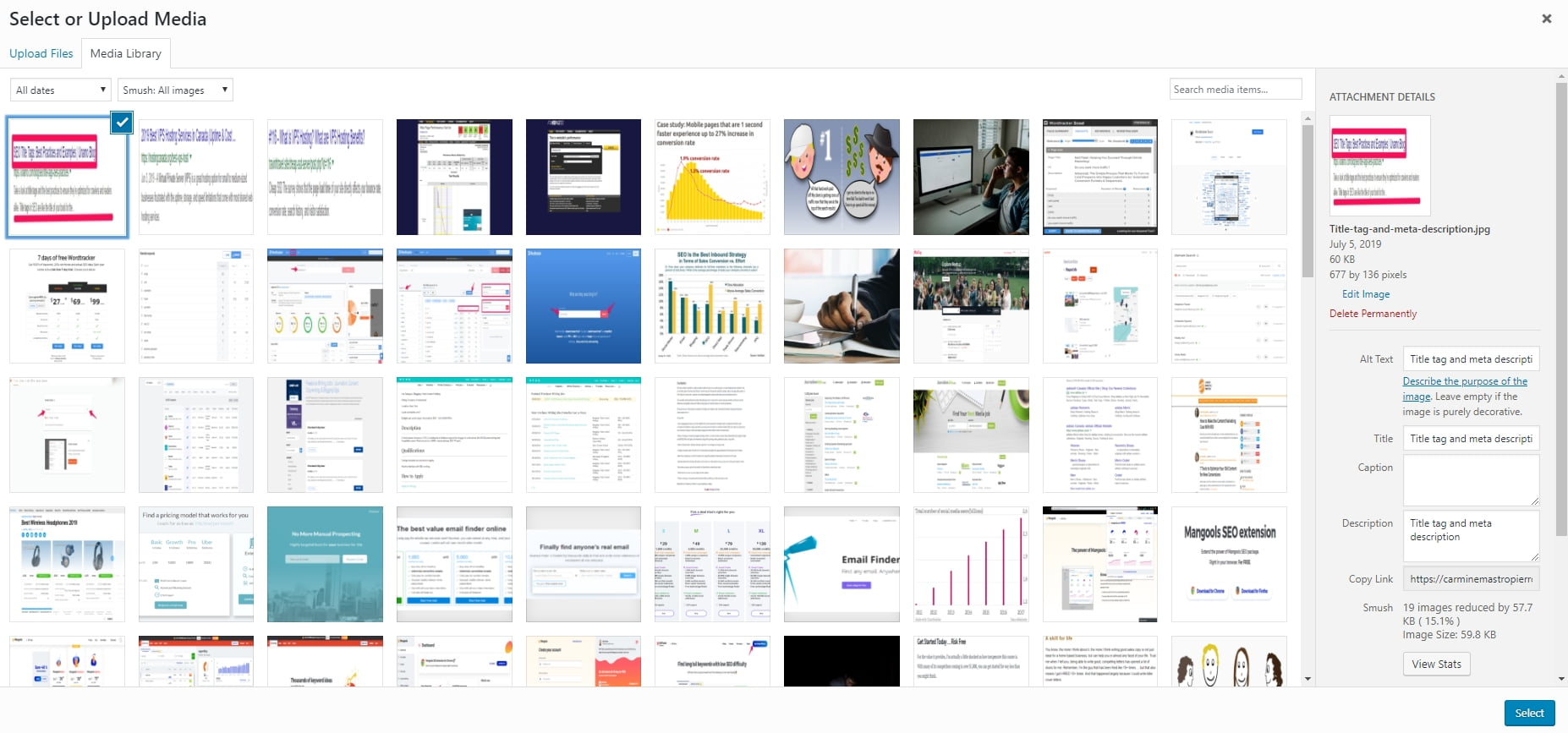
Additionally, you should optimize the title and description of the WordPress media, as well.
I recommend that you write an alt text phrase that accurately describes the image while also using a search term to get the best of both worlds.
Since we’re on the topic of images, let’s talk about…
Compressing images before or after uploading them
Image size is a common reason why websites slow down.
If images or other forms of media are several megabytes in size, it will slow down the page and increase the chances of users bouncing.
This is why you NEED to compress images before or after uploading them.
Everyone on WordPress should seriously consider getting the free Smush plugin that automatically reduces image size.
It’s compressed over 15,000 images on this website which has saved me over 87 megabytes in storage!
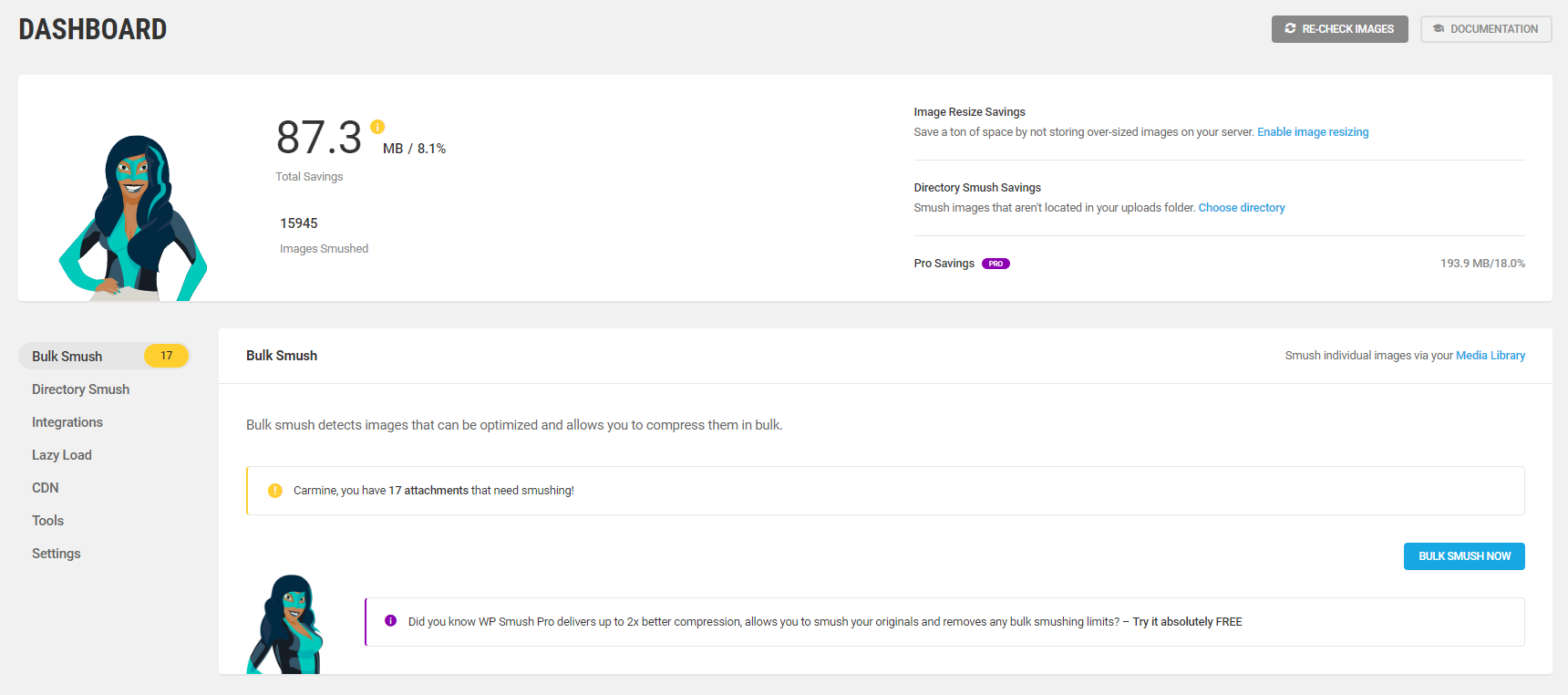
You can also tweak the settings to automatically compress new images you upload, strip meta data, and other ways to increase savings.
Create a blueprint to apply to every piece of content
This isn’t necessarily a specific strategy but is the most approach to implement.
The reality is that you will continually produce content and add new pages to your website over time.
This means that if you don’t have a blueprint or checklist, you won’t experience consistent results and will feel disorganized.
All of this can be avoided and you can reap the benefits of great SEO by creating a list of things you need to do for every new website, page, etc.
You might have criteria like the following, for example:
- Add main search term to the title, URL, first H1 tag, and first paragraph of the page.
- Optimize each image’s alt text, title, and description.
- Add three external links and two internal links for every 750 words.
- Include one video per blog post.
- Minimum word count is 1,500.
- Use H1, H2, and H3 tags to separate points.
- Use lists and bullets to organize ideas.
It doesn’t have to be overly complicated as long as you can apply it to every new page you create to make it more digestible for both readers and search engines.
Final thoughts on SEO best practices
The best practices for SEO don’t require intense software and Bill Gates level knowledge about computers.
In fact, I would argue a lot of SEO is quite simple and logical.
If you take a good look at what I outlined today, most of it is straightforward and makes sense from both the perspective of a user and search engine.
Here are the main takeaways you should begin applying today to start seeing improvements in rankings and traffic:
- Stick to white hat techniques to ensure that safety and longevity of your website. Avoid black hat strategies and service providers or you risk getting penalized.
- Audit the speed of your website and fix any issues that are slowing it down.
- Optimize URLs to be short and centered around a search term.
- Edit the title tag and meta description of every page and blog post on your website. Ideally they should include a targetted keyword.
- Clean up the alt text and file names of all media you upload.
- Compress images through tools like Smush to improve page speed and load times.
- Create a checklist you can follow for every new piece of content or page you make.














